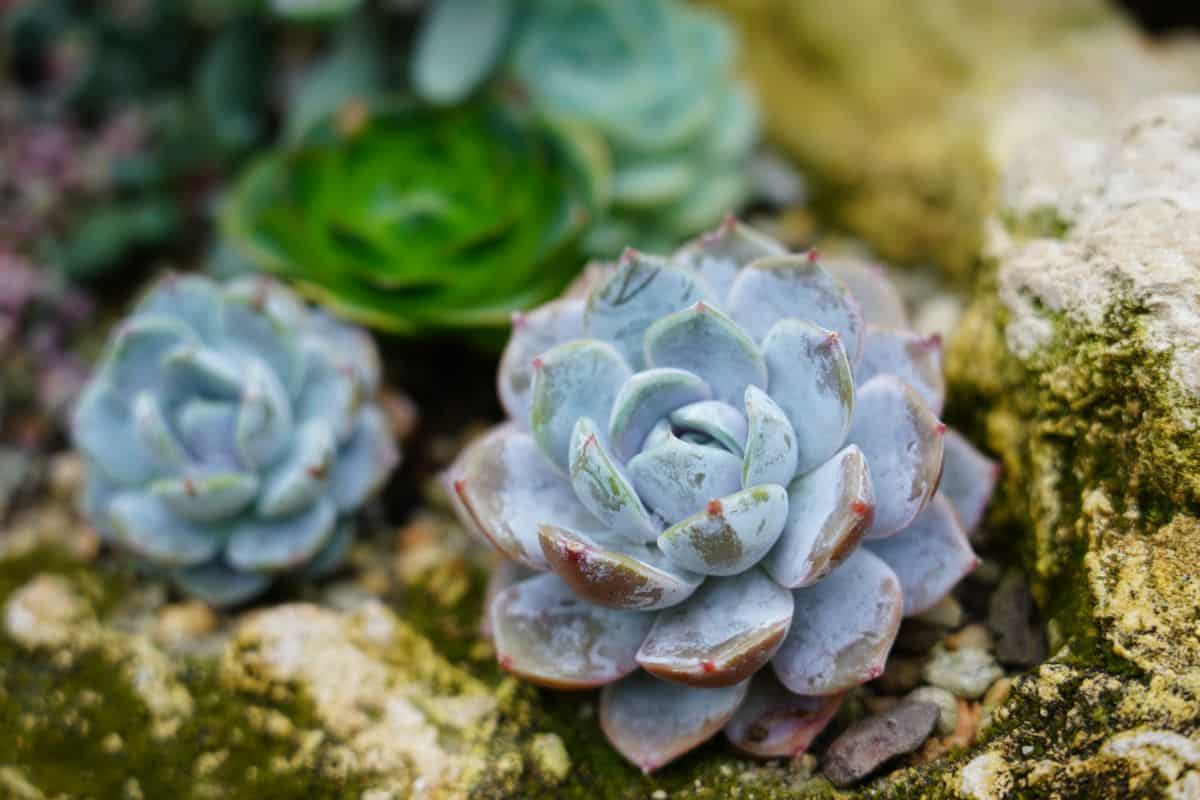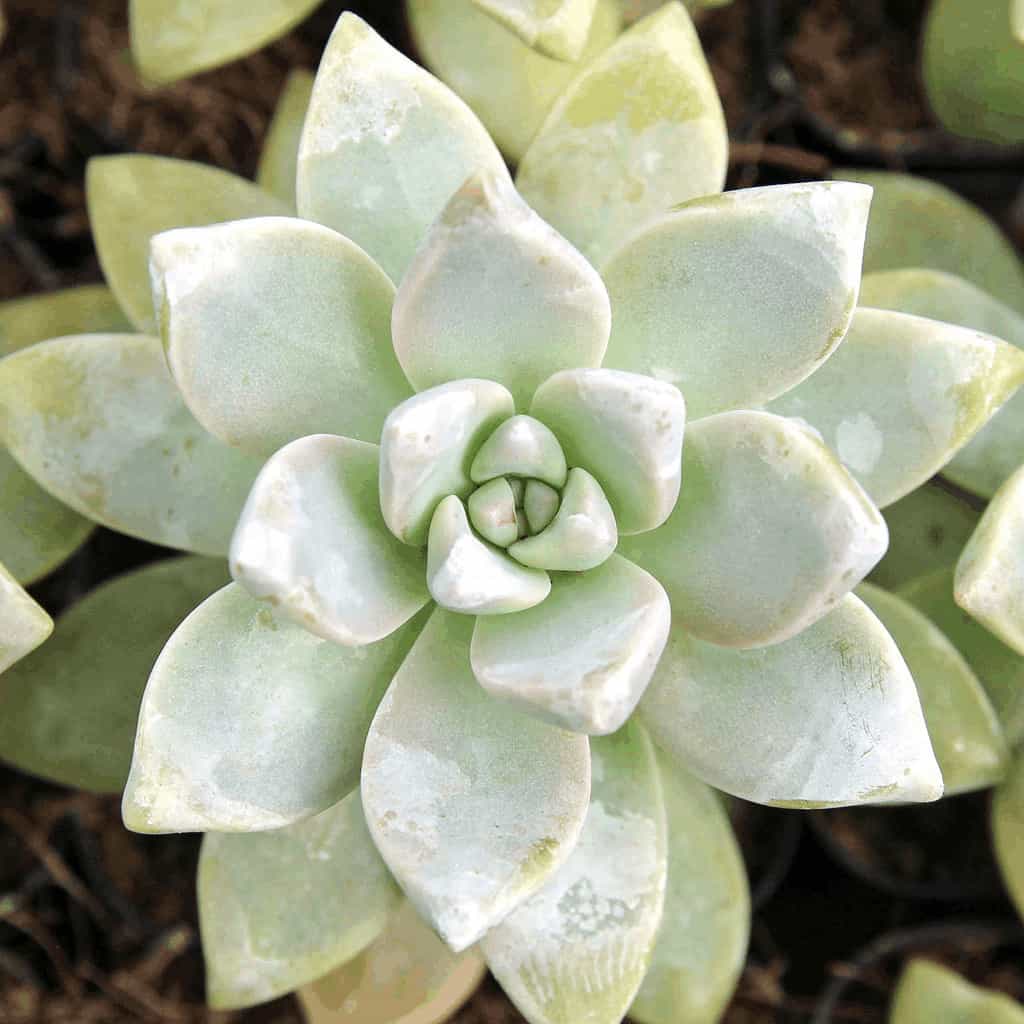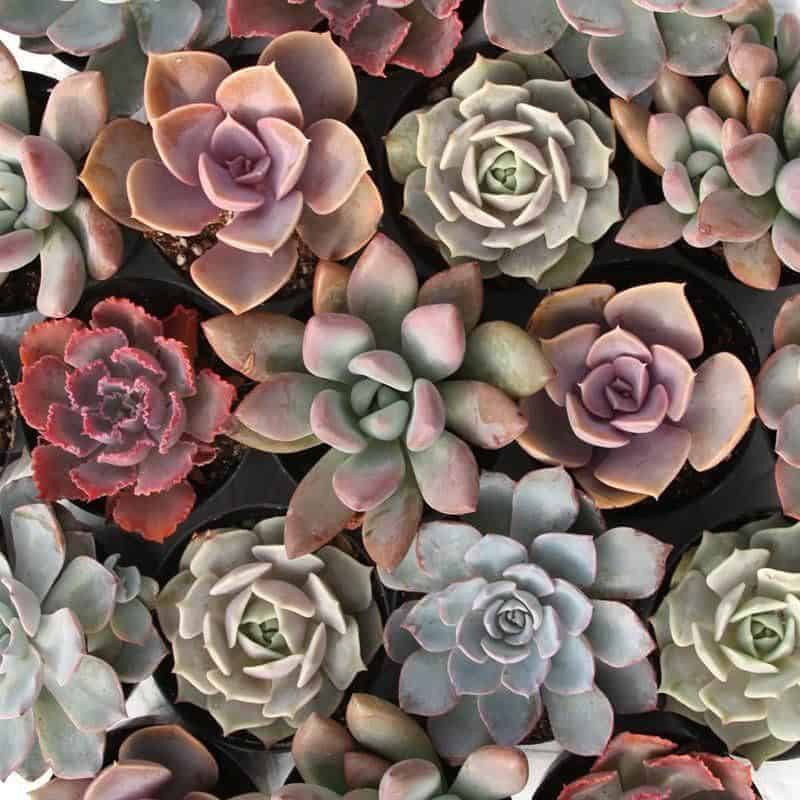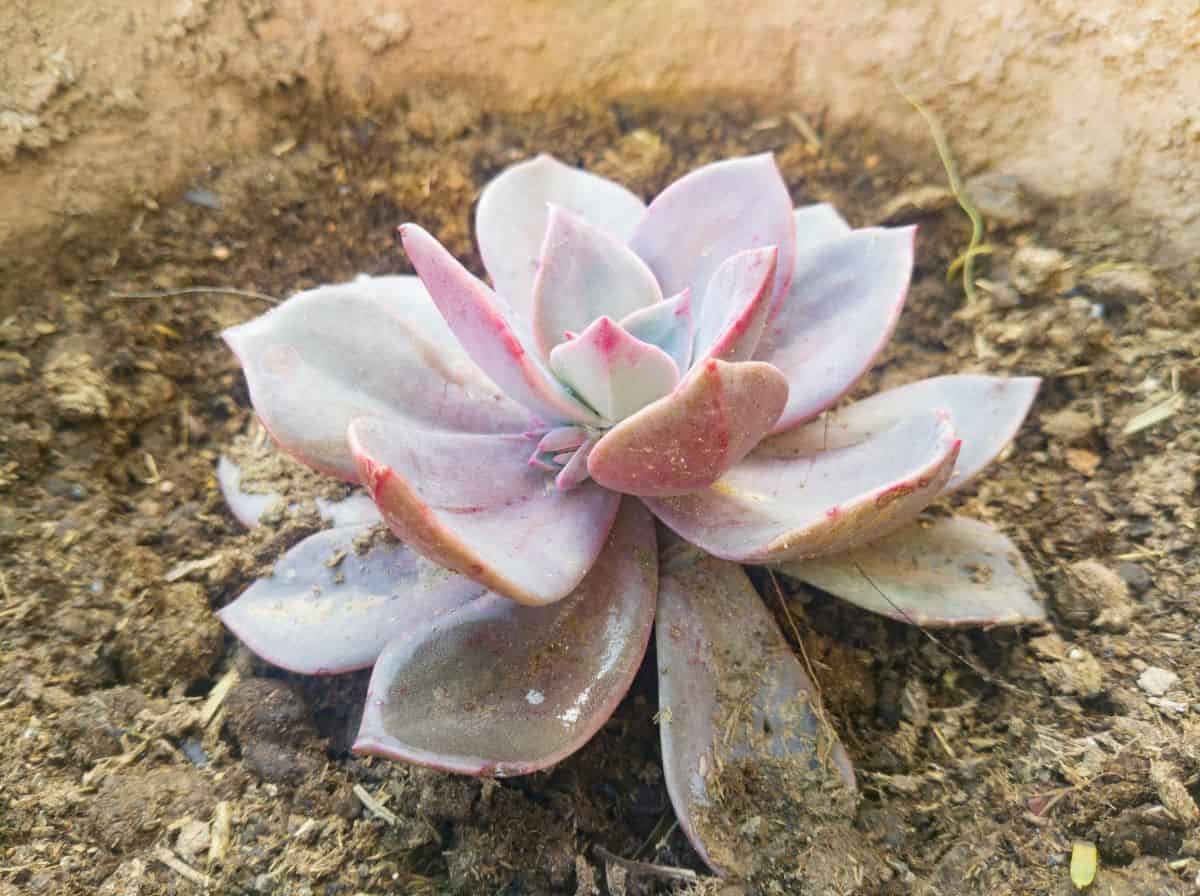If you have more than a few succulents in your collection you may have noticed that some of them are covered in a whitish or silvery film. If you’ve accidentally brushed up against the plant, you may also have noticed that the film comes off quite easily. The strange, powdery coating covering your succulent is called epicuticular wax, or farina.
Check Also: Best Cities in Arizona for Succulent and Cacti Lovers
The amount of farina on a plant will depend on the species, but you’ll typically find it on all parts of the plant, from the stem to the leaves. Some species even produce farina on the flowers. The thickness of farina varies from just a light dusting to a thick coating that may even flake off in places.

Epicuticular wax is also found on other types of plants. If you’re a fan of grapes or plums, you may be more familiar with farina than you think. Many different types of succulents are covered in farina including Echeveria, Graptopetalum, and Senecio.
Farina is not to be confused with the velvety fuzz covering some succulents, such as many types of Kalanchoe. The soft hairs covering the surfaces of these types of plants cannot be rubbed off like epicuticular wax and is a permanent characteristic of the plant.
It’s not uncommon for inexperienced gardeners to become concerned about the health of their plants after encountering farina for the first time. The soft, powdery appearance can inspire thoughts of mildew, mold, or disease. More than one succulent newbie has cleaned their entire plant only to find out that the powdery coating was actually beneficial to the plant.
One way to distinguish farina from disease is the evenness of the coating. Although farina may vary in thickness from plant to plant, the coating is even across the plant’s surface. If the coating is patchy or mottled, you may either be looking at a sick succulent, or simply one that has been handled roughly enough to remove some of the farina. You may need to use your best judgement to determine which one it is, but you can always ask your local nursery for advice if you’re unsure.
What is the Purpose of Farina?

Farina is responsible for the soft, pastel colors that many succulents are known for. Plants that would otherwise boast vibrant colors become muted or pale in color. However, farina not only gives succulents a neat silvery-white hue, but it has more than a few practical purposes as well. Farina is a protective coating that helps the plant stay healthy when exposed to extreme conditions, pathogens, and even insects.
No products found.
Read Also: How to Make Succulent Bonsai
Farina is hydrophobic, which means that it repels water, which can help prevent the plant from absorbing too much water. When water comes into contact with the leaves, it simply beads up on the surface and rolls away. The hydrophobic nature of epicuticular wax also helps keep moisture within the plant, especially during particularly hot or dry weather.
Farina also works as a type of natural sunscreen. Some succulents can suffer from burns if exposed to the sun for long periods of time. Farina helps reflect some of those harmful rays and can help prevent the plant from burns. Epicuticular wax works so well that the coating of Dudleya brittonii reflects about 83% of UV rays, which is higher than any other species of plant.
Check Also: The Best Cities in California for Succulent Lovers

Read Also: What is Cactus Corking?
What Happens if Farina is Removed?
Since farina provides a natural layer of protection for the plant, removing it can expose the plant to dangers that it would otherwise be able to tolerate. You may need to use extra caution during particularly hot or sunny weather, and you may need to keep a closer eye on the plant’s watering schedule. Succulents with damaged farina are also at risk for fungal infections and insect infestations.
Care must be taken when handling succulents covered in farina as it’s incredibly easy to wipe away. If you must clean your succulent, after repotting for example, then try to use a soft brush with a delicate touch. Using your finger may expose the plant to your skin’s oils, which can remove the coating. Some pesticides, fungicides, or other treatments may also remove the coating so use these types of products with care. Oil-based products in particular can remove farina with ease.
It should be noted that removing the farina from a plant does not mean certain death. Most plants do just fine without it. If your succulent is planted outside, you may need to protect the plant from burn spots if it’s placed in direct sunlight, but it’s unlikely that your plant will suffer any long-term damage because of the loss of epicuticular wax. If your plant is kept indoors, you may simply need to keep it out of full sun until the plant acclimates to life without farina.

Unfortunately, once the farina is removed from a plant, it’s unlikely to grow back. Some species may be able to recover a thin layer, but it will never be at the same level as it was before the damage. Once farina is gone, the effect is likely permanent.
If you happen to accidentally remove the farina from your plant, you may need to take extra care of the plant until enough new growth replaces the damaged areas. New growth will be produced with the normal amount of epicuticular wax, so as the damaged parts of the plant are replaced, your plant will be able to regain some of its natural protection.
Whether you’re an experienced gardener with a vast collection of succulents, or you’ve just started your succulent journey, you’re sure to encounter at least a few plants with epicuticular wax. The more you know about the succulents in your garden, the better you will be able to care for them. So, now that you’re an expert on farina, why not add a few pretty pastel succulents to your collection?

